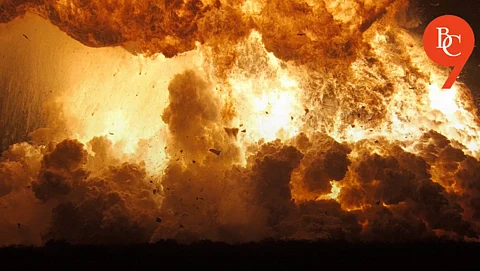

SpaceX’s Starship program, the crown jewel of Elon Musk’s vision to make humanity a multi-planetary species, has been rocked by its fourth consecutive rocket explosion in 2025. The latest incident, which unfolded during a static fire test at the company’s Starbase facility in Texas, has reignited concerns about the feasibility and timeline of Musk’s ambitious plans to send humans and cargo to Mars.
Late Wednesday night, as engineers prepared Starship Ship 36 for a routine static fire test, disaster struck. The rocket, anchored to the test stand and loaded with liquid methane and oxygen, suddenly erupted in a massive fireball. Dramatic footage captured two major explosions: one near the nose and another on the rocket’s left side, sending arcs of flaming debris skyward and shaking the Starbase launch site.
SpaceX quickly confirmed that all personnel were safe and that a safety perimeter had been maintained. Preliminary analysis pointed to a failure of a high-pressure nitrogen tank—known as a composite overwrapped pressure vessel (COPV)—in the nosecone area, which ruptured below its proof pressure. This is the first documented failure of this specific design, adding a new layer of complexity to the investigation.
This latest explosion marks the fourth straight Starship failure in 2025 alone. Previous mishaps included a rocket spinning out of control after failing to deploy practice satellites, another disintegrating over the ocean, and a January test that ended in a “rapid unscheduled disassembly”.
Despite these setbacks, SpaceX has maintained a rapid testing cadence, with Musk brushing off failures as valuable learning opportunities. “It three major of any new technology have it really work well,” Musk recently told his team, emphasizing the importance of iterative development and upgrades. However, with each high-profile explosion, public and industry skepticism grows.
Elon Musk’s ultimate goal is to send a cargo Starship to Mars by the end of 2026—a timeline that now appears increasingly optimistic. The Starship, designed to be a fully reusable spacecraft capable of carrying both crew and cargo, is central to NASA’s Artemis program, which aims to return astronauts to the Moon by 2027.
But the repeated failures have raised serious questions about the vehicle’s reliability and the technical hurdles that remain. Even if a flawless test flight is achieved, Starship will require complex in-orbit refueling operations and further advancements before it can embark on interplanetary journeys.
In the immediate aftermath, SpaceX has reiterated its commitment to safety and transparency. The company is working closely with local authorities to secure the site and investigate the anomaly. While no hazards were posed to nearby communities, SpaceX has urged the public to stay clear of the area during ongoing safing operations.
For Musk and his team, each explosion is both a setback and a source of crucial data. SpaceX’s philosophy of “fail fast, learn faster” has driven rapid progress in the past, but the mounting pressure from investors, NASA, and the public is undeniable.
